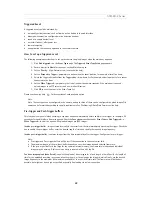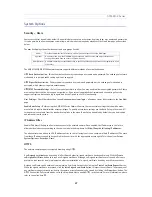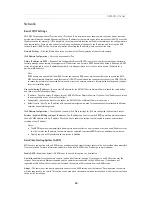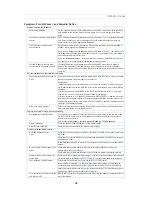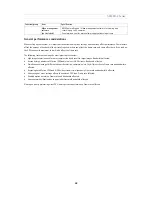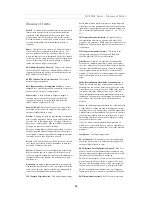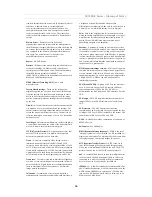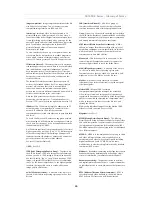
31
AXIS M32 Series
Use
NAT traversal
when your network cameras are located on an intranet (LAN) and you wish to make it available from the
other (WAN) side of a NAT router. With NAT traversal properly configured, all HTTP traffic to an external HTTP port in the NAT
router is forwarded to the camera.
Notes:
• For NAT traversal to work, this must be supported by the broadband router.
• The broadband router has many different names: “NAT router”, “Network router“, “Internet Gateway”, “Broadband
sharing device”, “ADSL modem” or “Home firewall” but the essential purpose of the device is the same.
Enable/Disable
- when enabled, the network camera attempts to configure port mapping in a NAT router on your network,
using UPnP™. Note that UPnP™ must be enabled in the camera (see
System Options > Network > UPnP
).
Use manually selected NAT router
- select this option to manually select a NAT router and enter the IP address for the router
in the field provided.
If a router is not manually specified, the network cameras automatically search for NAT routers on your network. If more than
one router is found, the default router is selected.
Alternative HTTP port
- select this option to manually define an external HTTP port. Enter the port number in the field
provided. If no port is entered here a port number is automatically selected when NAT traversal is enabled.
Notes:
• An alternative HTTP port can be used/be active even if NAT traversal is disabled. This is useful if your NAT router does
not support UPnP and you need to manually configure port forwarding in the NAT router.
• If you attempt to manually enter a port that is already in use, another available port is automatically selected.
• When the port is selected automatically it is displayed in this field. To change this enter a new port number and click
Save.
FTP -
The FTP server running in the network cameras enables the upload of new firmware, and user applications. Check the
box to enable the service.
RTSP -
The RTSP protocol allows a connecting client to start an H.264 stream. Check the box to enable the server and enter
the RTSP port number to use. The default setting is 554. Note that H.264 video streams will not be available if this service is
not enabled.
SOCKS
SOCKS is a networking proxy protocol. The Axis network camera can be configured to use a SOCKS server to reach networks
on the other side of a firewall/proxy server. This functionality is useful if the network camera is located on a local network
behind a firewall, and notifications, uploads, alarms, and such need to be sent to a destination outside the local network (such
as the Internet). See the online help
for more information.
LAN (intranet)
WAN (internet)
Broadband
(NAT)
router
ISP






